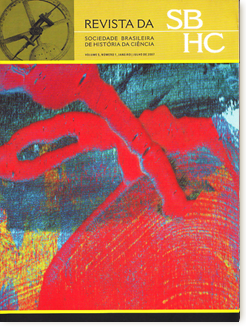The interrupted genes
the impact of the discovery of introns on the classical molecular gene definition
Keywords:
History, molecular gene, paradigm, research program, debateAbstract
During all the year of 1977 independent teams of research, such as the ones carried out by the British Richard Roberts at Cold Spring Harbor Laboratory, the North American Phillip Sharp at the Massachusetts Institute of Technology (MIT), and the Frenchman Pierre Chambon at the National Centre of la Recherche Scientifique among others, discovered, despite what was known about bacteria, that the gene was not a piece of uninterrupted DNA ready to be translated in proteins. In eukaryotic organisms the necessary messenger RNA needs to be mounted in order to give origin to the final protein. However, this assembly of the messenger RNA can occur of alternative forms, generating more than a protein for gene. This phenomenon is called alternative splicing of the messenger RNA. The discovery of this and other molecular processes are the necessary reasons for some authors to claim a conceptual change of the biological research. For other authors, these discoveries are not anomalies, but they keep the inner core of a lakatosian program of research. The “central dogma of molecular biology”, treated or as kuhnian paradigm or as lakatosian inner core is debated.


